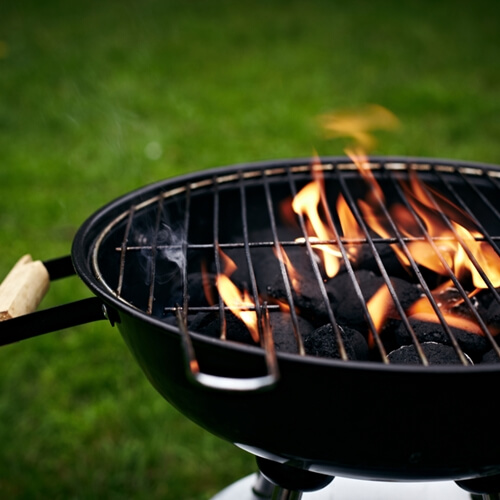4 Barbecue Tips And Tricks
When it comes to summertime, barbecuing is a true staple of the season. Families everywhere spend many a carefree afternoon – or even an entire day – enjoying each other’s company over a quality home-cooked meal. However, actually manning the grill can take away from precious time otherwise reserved for swimming or bocce ball. To make the most of your next barbecue experience, here are a few tips and tricks to make grilling a (cool summer) breeze.
Always start with oil
In many kitchens, chefs will use oil to not only enhance flavors but prevent meats from sticking to the pan. As it turns out, the same concept applies to grilling. Fish and other lean proteins stick quite frequently, often causing a loss in the amount of viable meat. To avoid such summertime sadness, soak a paper towel in some olive oil and then rub it against the grill’s grating. Alternatively, baste any meat with a mixture of olive oil and sea salt before commencing grilling.
Be through with the seasoning
As Men’s Health notes, not enough emphasis is placed on seasoning a piece of meat’s interior, which can often reduce the overall flavoring. All cuts of meat need to be seasoned both inside and out; not only does it help with the consistency of flavors, but it can often help the meat cook more thoroughly. One method for perfectly seasoned meat is board dressing, which involves coating a cutting board with olive oil, parsley, black pepper and kosher salt. When flipped around and sliced, the meat and its juices will better absorb the mix of flavors.
The two-zone setup
Truly skilled grill masters know how to directly control the temperature of their cooking apparatus. The most popular approach, the two-zone setup involves splitting a charcoal or gas grill between two temperature settings, direct and indirect heat. The former cooks meat via direct exposure to heat, while the latter relies on convection, in which warm air circulates around the meat. Handling the two-zone method can prove tricky at first, but it does help cut down on cooking time by allowing two different sets of meat to be cooked simultaneously. It also allows the same meat to be cooked in different ways; for instance, a chicken can be cooked on the direct side and then moved to the indirect side for browning.
Wood vs. charcoal
Among grilling purists, there’s an eternal debate between the merits of cooking with either wood or charcoal grills. Wood offers meat an especially smoky flavor. Oak and pecan are good choices for most cuts, though it’s best to opt for alder wood when grilling fish. When cooking with wood, though, be cautious: Newly cut logs retain the most moisture and often produce more smoke than heat, which can affect overall grilling times.
There are several kinds of charcoal available, and knowing which to choose is a matter of preference. Lump charcoal, made by pre-burning old hardwood, is a popular choice because the heat drastically reduces cook time. Made from compressed sawdust, extruded charcoal is celebrated for both its long burn time and overall heat intensity. For those using a smoker, be wary that the paraffin found within pre-treated charcoal briquettes can affect grilling quality.
Ensure the success of any grilling endeavor by enrolling in culinary school.


